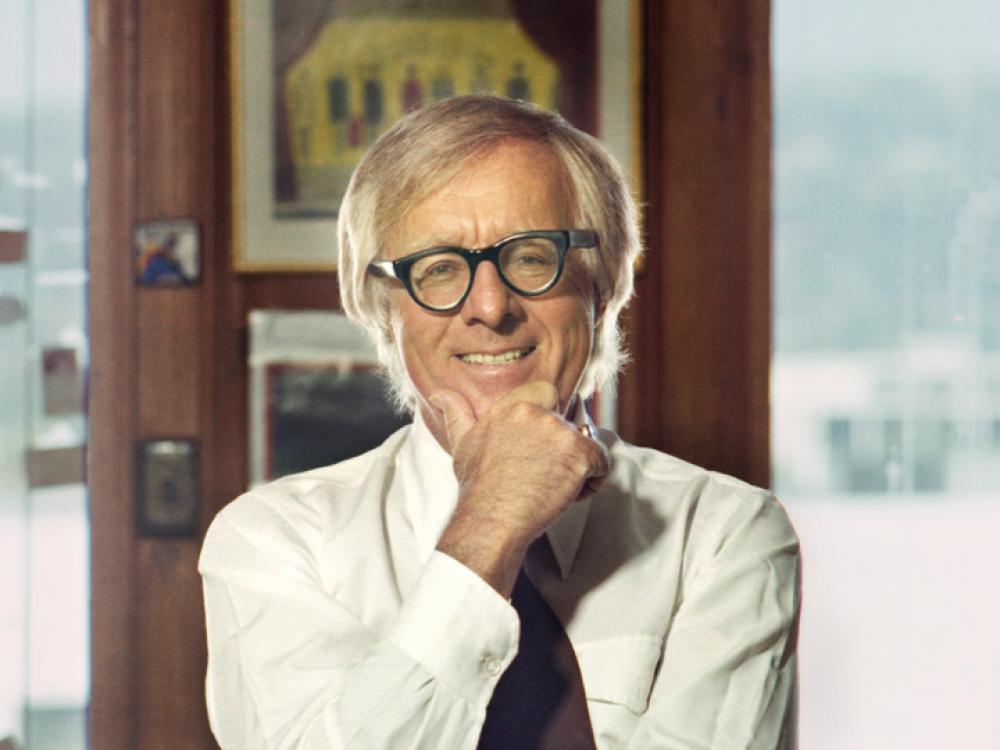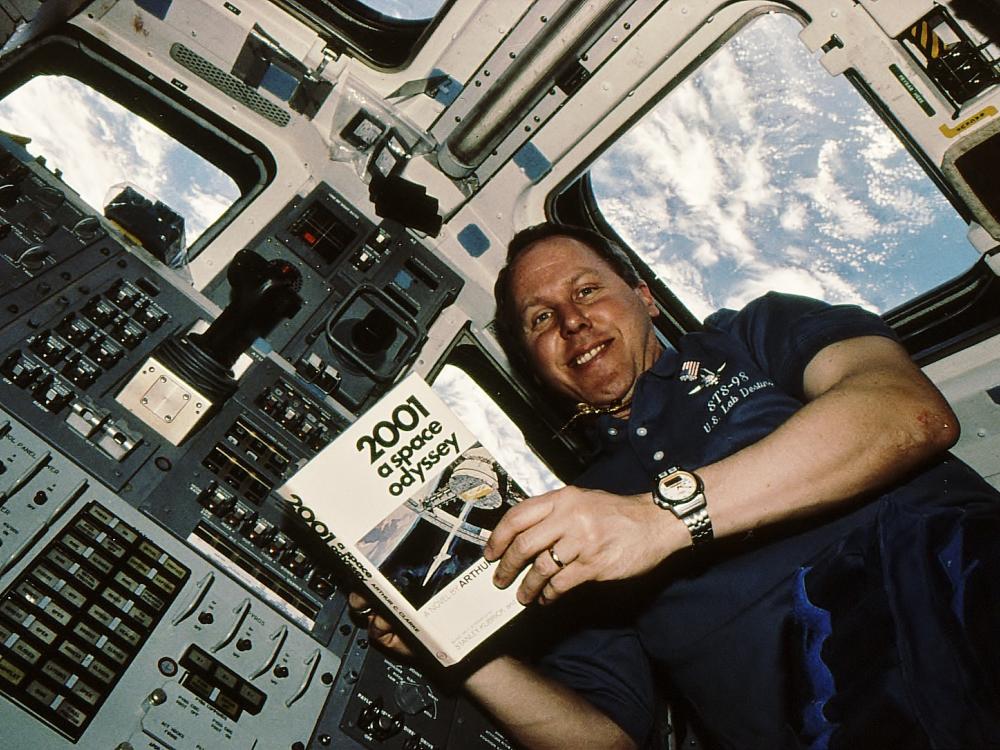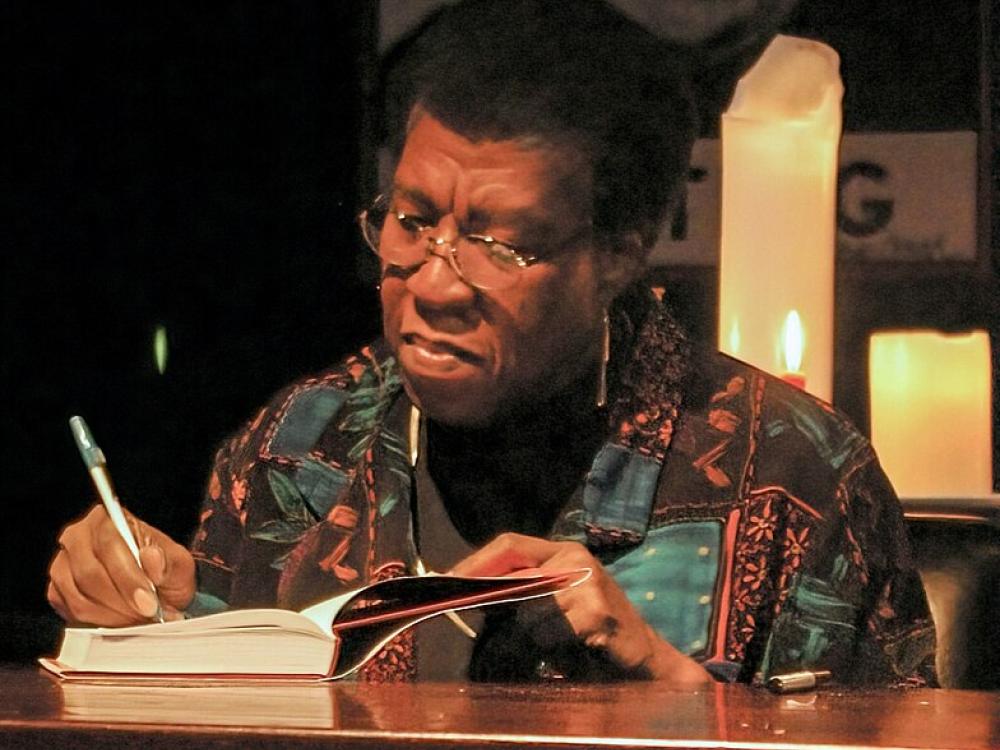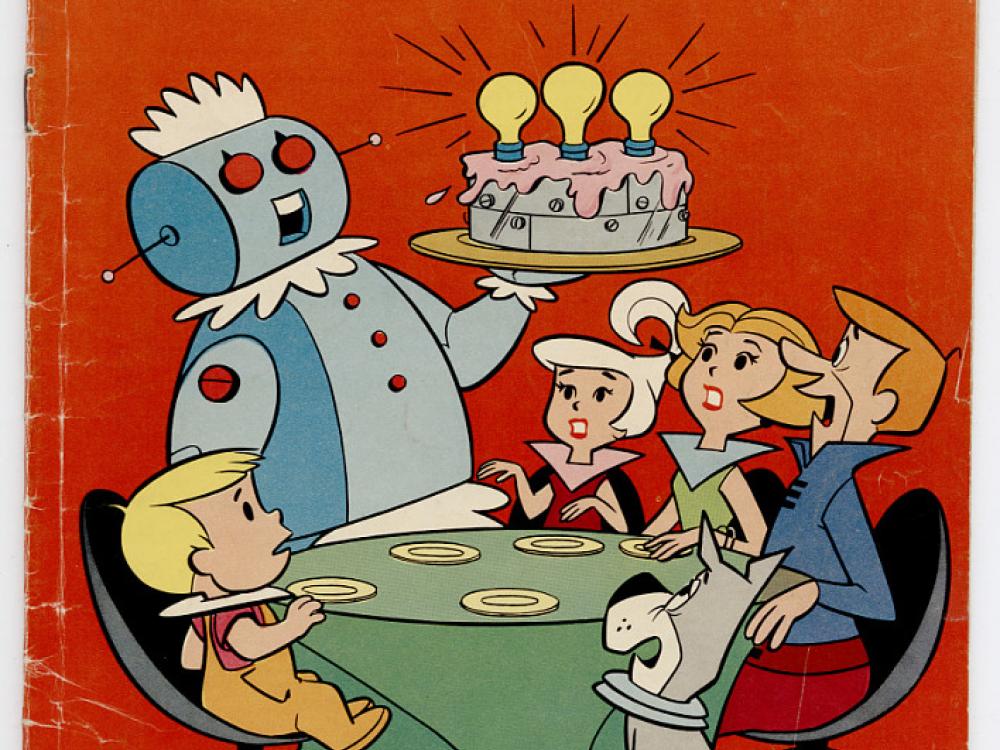Science fiction allows us to imagine what happened a long time ago in a galaxy far, far away, or to boldly go where no one has gone before.
Through science fiction, we're able to explore new frontiers in science, innovation, and society.
Jump to a Section: Early Works Space Race Begins Human Spaceflight Begins Space Exploration Continues Science Fiction Over Time Activities for Families
Jump to a Work: Star Trek 2001: A Space Odyssey Star Wars
Early Works
Long before we went to space, we imagined what space would be like (or for space to come to us).
Buck Rogers first appeared in the pulp magazine Amazing Stories in August 1928 as "Anthony Rogers." Renamed "Buck" to tap into the popularity of Westerns, Rogers eventually had his own comic strip, radio program, and television show.
When Daisy Manufacturing Co. introduced this first Buck Rogers metal gun for 50¢ in 1934, its popularity sparked a brief price war between Macy's and Gimbel's department stores.
It’s Halloween eve, 1938, and you're listening to the radio. Suddenly, the broadcast is interrupted by breaking news. First, a report of explosions on Mars, then news of a meteorite landing in New Jersey, and suddenly a correspondent is attacked live on air by a Martian heat ray!
Obvious spoiler: there was no Martian attack. What actually happened might surprise you.
As the Space Race Begins
Late 1940s and 1950s
While the United States and the Soviet Union competed to achieve new feats in space; authors, artists, and other creatives were crafting new stories about the possibilities of space.
What was the Space Race?
The Space Race grew out of the Cold War between the United States and the Soviet Union. The two superpowers competed for supremacy in a global struggle that touched a variety of areas from military might to consumer goods. Space was a crucial arena for this rivalry. Each side sought to demonstrate its superiority through impressive feats in rocketry and spaceflight.
Science Fiction Writers in the 1940s and 1950s
As Humans Begin to Go to Space
1960s and 1970s
When humans went to actual outer space, on Earth we imagined new stories for people (and aliens) in fictional space. Some of our most popular and enduring works of science fiction were born in the 1960s and 1970s.
Who were the first humans in space?
On April 12, 1961, Yuri Gagarin became the first human in space. Alan Shepard became the first American in space less than a month later. From the United States, the Mercury, Gemini, and Apollo programs would send many more astronauts into space in the coming years, ultimately leading to humans walking on the Moon.
Star Trek
Star Trek became one of the most influential shows in television history.
Premiering in 1966, the original series depicts a racially-integrated, multinational crew of men and women aboard the starship Enterprise working together as they travel the cosmos.
The show's plot, including its attention to contemporary social and political issues, pushed the boundaries of network television, earning Star Trek a dedicated fan base. Even though the original series only lasted three seasons, fans lobbied for the franchise's continuation. And continue it did, with several spin-off series, a film franchise, and more.
This 11 foot model of the starship Enterprise was used in the filming of the original Star Trek series. In 2016, after extensive research and meticulous conservation, the model was restored to its appearance at the end of filming for the original television series.
2001: A Space Odyssey
When viewers filed into the seats to see 2001: A Space Odyssey for the first time in 1968, they saw astronaut David Bowman travel on a voyage to Jupiter. (Spoiler alert: Things don’t quite go as planned—including a famous face off with HAL, the spaceship's computer.)
Director Stanley Kubrick based the film on Arthur C. Clarke’s short story “The Sentinel” and the two men wrote the screenplay together. The novel version of 2001: A Space Odyssey, written by Clarke, was not published until after the film debuted.
Legacy of 2001: A Space Odyssey
HAL and Its Real-Life Computer Counterparts
Star Wars
In 1977, Star Wars: A New Hope became one of the biggest box office hits of all time. It was the first installment of the Star Wars series, which introduced generations of fans to space as a setting for adventure and exploration.
Star Wars takes place a long time ago in a galaxy far, far away and explores our heroes' fight against the evil Empire.
The original trilogy of Star Wars movies may have been about taking down one empire, but it sparked another dynasty—one that continued in several movies, television shows, books, and more.
A T-70 X-wing Starfighter hangs amidst a variety of real-life aircraft and spacecraft in the National Air and Space Museum in Washington, DC. The full-sized vehicle, with a wingspan of 37 feet, appeared in Star Wars: The Rise of Skywalker and is on long-term loan from Lucasfilm.
More Works from the 1960s and 1970s
This is the model of the alien Mother Ship used in the filming of the 1977 movie directed by Stephen Spielberg. The ship was made using model train parts and other kits. When filmed with special photographic and lighting effects, the model appears to be a huge, hovering craft.
Visionary Writers in the 1960s and 1970s
As Space Exploration Continues
As humans continue to explore space, science fiction continues to develop new ideas and imaginings of what we might find in the cosmos, and how it might affect life on Earth.
AirSpace Movie Club
Join the hosts of our AirSpace podcast to take a closer look at the sci-fi movies they love.
Science Fiction Over Time
Take a deep dive with us to look at science fiction over time, exploring movements like Afrofuturism or themes from how we've explored Mars to reimagining gender and sexuality.
An important part of science fiction, Afrofuturism is the reframing and reimagining of the past, present, and future through a global Black lens rooted in the African diaspora.
A multi-media movement focused on issues of social justice and equity, it centers African and African American contributions to the advancement of science, technology, and culture and is often explored through music, art, and literature.










